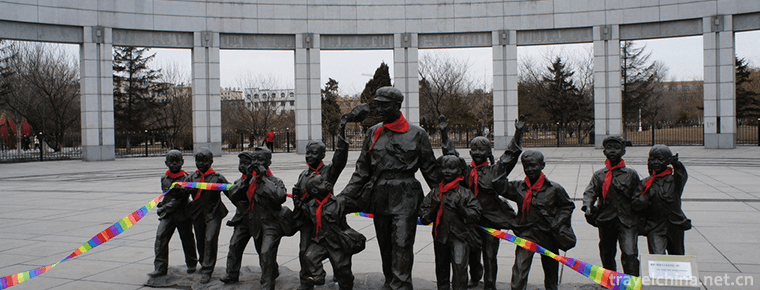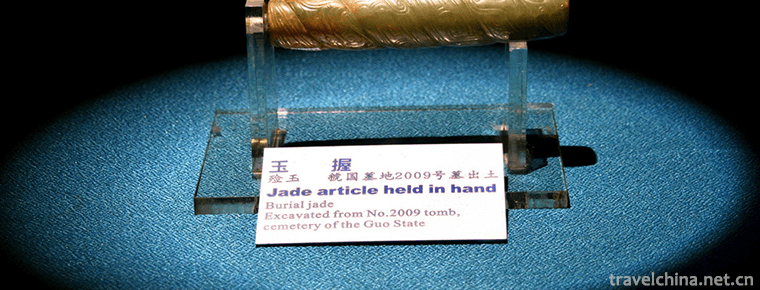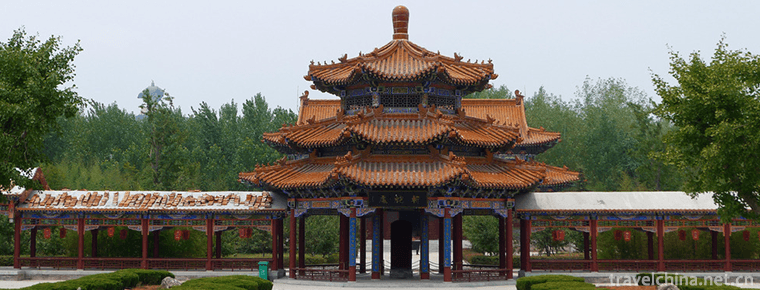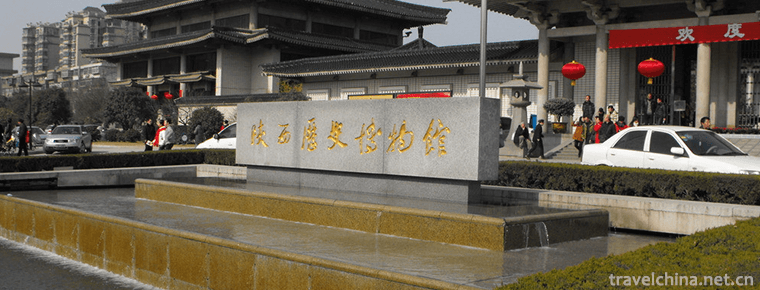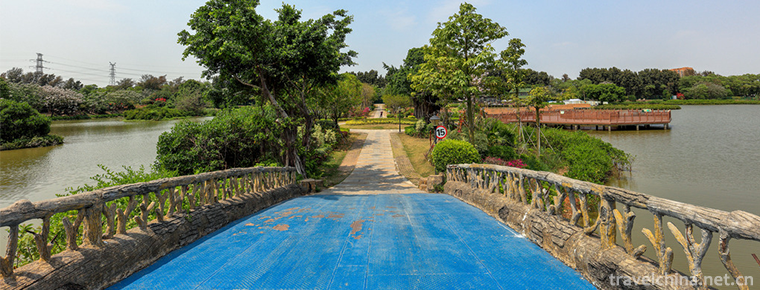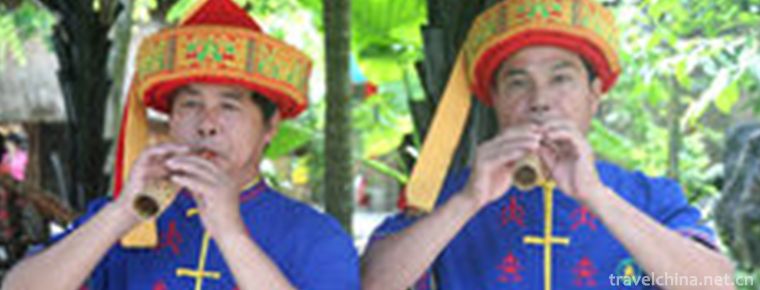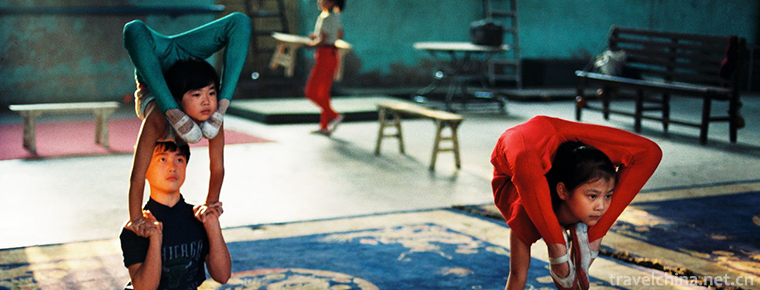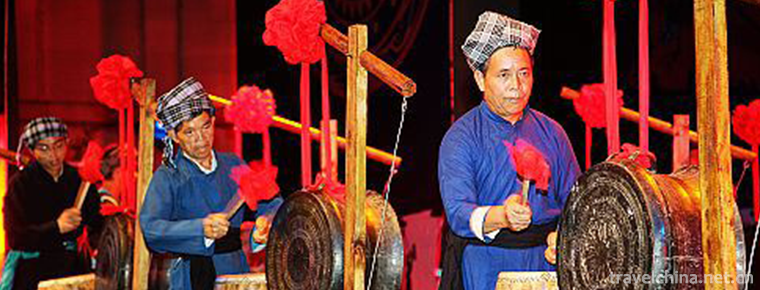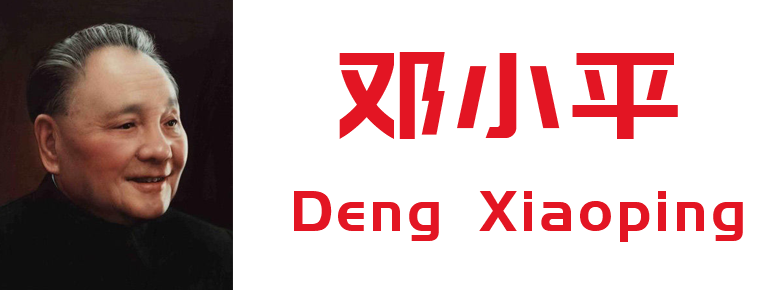Donghekou earthquake site park
Donghekou earthquake site park
Donghekou earthquake site park, located in Qingchuan County, Guangyuan City, Sichuan Province, is the first earthquake site protection memorial site of Wenchuan earthquake. On November 12, 2008, the opening ceremony and the launching ceremony of the tourism market after the earthquake were held. The earthquake site park was formed by the earth stress explosion during the Wenchuan earthquake. It is also the earthquake site group with the most abundant geological damage forms, the largest volume, the largest number of earthquake dammed lakes, and the most serious casualties. The earthquake site park includes a "Y" shaped layout from Guanzhuang town of Qingchuan County along the Qingzhu River, through donghekou and Shibangou of Hongguang township to heijia of Qianjin Township, along Hongshi River, through donghekou of Hongguang Township, Dongjia of Shiba Township and Woqian of Magong Township, with a concentrated area of nearly 50 square kilometers, including five townships and one town.
History and culture
The Wenchuan earthquake occurred at 14:28:04.1s Beijing time on May 12, 2008 (06:28:04.1s, coordinated world time, May 12), 2008. The epicenter of the earthquake is located in Wenchuan County, Aba Tibetan and Qiang Autonomous Prefecture, Sichuan Province, and 90km west northwest of Chengdu, the capital of Sichuan Province.
Ode to donghekou
He Kaisi
Qingchuan County, a quiet East River mouth. Surrounded by mountains and trees, the two rivers converge and the earth is beautiful. In the land of paradise, chickens and dogs are heard of each other; the land of peace and happiness is green. When the disaster from the sky, thousands of miles of sadness from the dragon's gate.
At 14:28 on May 12, 2008, in the summer of Wuzi, an earthquake of magnitude 8 on the Richter scale suddenly struck Wenchuan, Sichuan Province. It broke first in Yingxiu and finally in Qingchuan. The sky is falling apart and the rain is blowing. Thousands of miles of homes were destroyed, and all living beings were in danger. At that time, the great damage of donghekou was extremely tragic. The sound of the earth suddenly thundered and thundered; the three mountains fell, rolling boulders emptied. The two rivers are cut off and become a lake of weirs; the surface rises like a tornado. Sobbing, great sorrow invisible, great sorrow wish sound! Peace Village, instant land sink; mourn my living people, grieve for their lives. What is the violence of nature, the sudden calamity; the inhumanity of heaven and earth, destroying my home. Once upon a time, Qu Zi's heaven was in the southeast; today, the earth is overturned in Qingchuan. What a pain, folks! What a pity, my compatriots!
Well, disaster has great love, and danger is just like a strong will. Qingchuan is united with one heart in disaster relief and reconstruction of homeland. The blood is connected with each other, and China is in the same state of war. The disaster of mankind is the progress of mankind, and the great cause together is a new chapter in history. Susu site park, the site of the earthquake. Oh, how tragic the Wenchuan earthquake is! Please have a look at donghekou! The mountains and rivers are broken and the disasters are fierce; there are many weirs and lakes, and the tears are sparkling. The high platform mourns the wind, worships the dead, and praises the strong life. With deep love for flesh and blood, Zhejiang Province has made great efforts to help, overcome the difficulties and create a brilliant historical century. Majestic, Qingchuan evergreen, the earth evergreen, earthquake resistant donghekou; Weiya, earthquake relief, Yongming history, national spirit contains great Zhang Guang!
Man and nature, eternal topic, road, harmony; reverence for nature, love nature, three talents in one, everlasting!
Note: San Cai refers to heaven, earth and people in Chinese culture.
On May 11, 2009, a stone tablet stands in the center of the earthquake square in the donghekou earthquake site park, Qingchuan, Sichuan Province. It is engraved with "donghekou Fu" written by he Kaisi, chairman of Sichuan literary critics association.
It is reported that the Qingchuan donghekou earthquake occurred on May 12, 2008, when the mountain fell and the earth cracked, and a thousand miles home was destroyed. After the completion of the donghekou site park, the three themes of the memorial to the victims, the scientific research on the earthquake and the development of tourism will be integrated into one. When he Kaisi visited donghekou in September 2008, the earthquake scene here inspired him to write Fu. After careful deliberation, he wrote "Ode to donghekou". He Kaisi said: "any disaster is compensated by human progress. The first purpose of this ode is to reflect the spirit of the local people to rebuild their homes as one heart, and the other is to express gratitude for the support of one party in difficulties. I hope to record this disaster and rebirth in the form of Fu. " He Kaisi put forward a point of view in another Fu written for the largest plank house area of Qingcheng Mountain, Qingshan Town, that is, "earthquake resistance and reconstruction should be carried out simultaneously, and disaster relief should be carried out together with production.". We should develop the treatment of trauma and develop our homeland. "
geographical environment
The collapse sites formed by the earth stress explosion in donghekou village of Hongguang Township, Qinglong village of Shiba Township, Woqian village of Magong Township and Sanfeng village of Suhe Township show the collapse, ground fissure, uplift, fault and fold caused by earthquake. The landslide and debris flow caused by mountain movement also formed 36 barrier lakes with different shapes, such as Shibangou, donghekou and Hongshi river.
The entrance to the park is located in Xinhua Village, Guanzhuang town. Before the earthquake, two storey buildings were built on the river side, passing through the building, and could walk onto a Tiesuo bridge to Xinhua Village on the other side of the river. Locals call the bridge Xinhua bridge, the only way for villagers to get in and out of the village. Today, the building on the side of the river is only one floor, with crisscross cracks in the wall. On the top of the building, the pavilion, which was originally built of wood, was left with empty wooden frames. The mountain over the river seems to have been cut by a knife, and the white marks of a road are clearly visible.
On the square, the three boulders coming face to face are like a big "Chuan" character. The three boulders are arranged at intervals of 5.12 m and 2.28 m, May 12 and 14:28, 2008. Under the three boulders is the topographic map of Qingchuan. Beside the square, there are panoramic photos of donghekou before and after the earthquake. "After the May 12 earthquake, donghekou collapsed, and more than 780 people including 184 houses, villagers, passers-by, teachers and students of donghekou primary school in four groups were buried." On one side of the square, silent data still describe the damage caused by the earthquake.
A huge stone, 5.1 meters long, 4.8 meters wide, 3.2 meters high and weighing 150 tons, sits in the park. This is a strange stone, different from other stones in shape and material. In order to prevent weathering, the management specially coated a layer of tung oil on the surface of the stone for protection. Where does this stone come from? Is it caused by the earth stress explosion at donghekou? Or did the crust squeeze out of the ground? "It should have come from the collapse of Wangjiashan on the opposite side." An on-site construction worker said, "it's two kilometers from there to here. Such a big thing flies so far. It can be seen that the earthquake was severe at that time."
Main attractions
Donghekou earthquake site park is the first earthquake site Memorial Park of Wenchuan earthquake. It is the earthquake site group formed by the earth stress explosion with the most abundant geological damage forms, the largest number of earthquake dammed lakes and the most concentrated earth stress.
Qingchuan donghekou earthquake site park has been built into a national 4A tourist attraction, a national Red Tourism classic scenic spot, a national earthquake science popularization education base, a provincial patriotism education base and a Sichuan Provincial Geological Park. "To the donghekou, see the mountains and landslides, witness the tragic, inspiring life." Zhang Xiaoshen, a local villager, said with emotion: "after the earthquake relief and post disaster reconstruction, our home has become more beautiful and our life has become better. This is also the best place for popular science education on earthquake prevention and disaster reduction."
Earthquake site square
These three boulders also flew here in the earthquake, forming a huge "Sichuan" character, representing the Sichuan earthquake, and also representing the earthquake wave from Wenchuan to Beichuan to Qingchuan. The time frame is always set at 14:28 on May 12, 2008. The three stones stand on the map of Qingchuan, implying that the mountains and rivers of Qingchuan will be destroyed by the earthquake, and the spirit of Qingchuan will not be broken by the earthquake!
Donghekou dammed lake
It is formed by the accumulation formed by huge mountain explosion blocking the river channel. In the middle of the lake
It used to be a good field. Two kilometers further along the donghekou barrier lake is Shibangou barrier lake, which is also the second largest barrier lake in Wenchuan earthquake, second only to Tangjiashan barrier lake.
Sacrificial platform
The black marble Memorial platform, built to mourn the victims of the Wenchuan earthquake, is engraved with the names of the villagers in donghekou who died in the Wenchuan earthquake and the names of the compatriots who died in Qingchuan. Worship is a kind of faith, which worships those who died in the Wenchuan earthquake, so that the dead can rest in peace and make the living stronger. Let us always remember them and remember them. At the same time, we should invigorate our spirit, turn grief into strength, rebuild a beautiful new home, and comfort the spirits in heaven
Wangyangping viewing platform
Here, we can see the whole picture of the donghekou earthquake site more completely, and can watch the earth stress explosion site of donghekou in a close distance.
Donghekou bridge site
It is an important bridge on the Jintang line. It has experienced the catastrophic flood on August 28, 2006. It can withstand the impact of the flood, but it can not resist the merciless earthquake. Donghekou bridge was buried nearly 80 meters deep. It is said that there was a bus on the bridge when the earthquake occurred.
Hongshi River
A brand new Hongshi river. The huge accumulation formed by the earthquake blocked the old Hongshi river. In order to eliminate the danger as soon as possible, the tiger division of Jinan Military Region and the third water and electricity corps of the armed police force worked hard to dig out the river.
Love square
The stone in the square is called "love stone". On May 18, 2008, General Secretary Hu Jintao, in the rescue scene of Yinghua Town, the worst hit town in Shifang City, firmly called out in a loud voice, "no difficulty can defeat the heroic Chinese people!" With the encouragement of this spirit, we have overcome one difficulty after another and set off another climax of post disaster reconstruction.
Seismolith
The stone is 5.1 meters long, 4.8 meters wide, 3.2 meters high, and weighs more than 150 tons. Before the earthquake, it was a good field and there was no such stone. After the earthquake, the rock is located here, which is quite different from the rocks from the collapse of nearby mountains. Is it caused by the earth's stress explosion at donghekou, or is the crust extruded from the ground? It needs to be explored.
Seismic knowledge corridor
Earthquake is terrible, it is irresistible, but can be prevented, earthquake can not be accurately predicted, but earthquake can be scientifically recognized. The earthquake gave us a merciless blow, but also changed the trajectory of many people's lives. People's life is fragile and insignificant in front of the earthquake, but by understanding the earthquake and understanding the earthquake knowledge, we can win the maximum living space. Watch the earthquake cartoon knowledge gallery. Let's walk into the earthquake and understand the earthquake.
Photo exhibition
The exhibition focuses on the disaster situation, care, rescue, reconstruction and Thanksgiving. Under the general guidance of the CPC Central Committee and the State Council for post disaster reconstruction, under the vigorous assistance of the counterpart Qingchuan in Zhejiang Province, and under the strong leadership of Party committees at all levels, we have carried forward the Qingchuan spirit of "unity of one mind, tenacious struggle, self-reliance and unremitting efforts", and worked hard for 1000 days to build a beautiful new Qingchuan.
Qingchuan
People were surprised to find the word "Qingchuan" written by shenlai on a mountain in donghekou earthquake site park.
tourist guide
Bus passenger line
(1) Guangyuan donghekou
Guangyuan Nanhe bus station: Guangyuan Qingchuan and Guangyuan Qingxi buses
When you buy a ticket, you can buy Liangshui Town, get off at Liangshui bridge, and then go to the minibus or motorcycle of donghekou.
Note: Guangyuan Qingxi shuttle bus can directly reach the site park
(2) Mianyang donghekou
Pingzhengqiao bus station: Mianyang Qingchuan and Mianyang Qingxi buses
When you buy a ticket, you can buy Liangshui Town, get off at Liangshui bridge, and then go to the minibus or motorcycle of donghekou. Note: Mianyang Qingxi shuttle bus can directly reach the site park
(3) Chengdu donghekou
Chengdu zhaojuesi bus station: Chengdu Qingchuan and Chengdu Qingxi buses
When you buy a ticket, you can buy Liangshui Town, get off at Liangshui bridge, and then go to the minibus or motorcycle of donghekou.
Note: Chengdu Qingxi shuttle bus can directly reach the site park
Railway passenger line
(1) Guangyuan donghekou
Catch k9457 train (Guangyuan Chengdu) at Guangyuan railway station, depart from Guangyuan railway station at 14:03 noon, get off at zhuyuanba station, and arrive at zhuyuanba station at 15:34 noon; then take a minibus or bus outside zhuyuanba station to Liangshui Town, get off at Liangshui bridge, and then catch a minibus or motorcycle to donghekou.
(2) Mianyang donghekou
Catch k9458 train (Chengdu Guangyuan) at Mianyang railway station, depart from Mianyang railway station at 9:53 a.m., get off at zhuyuanba station, and arrive at zhuyuanba station at 12:16 noon; then take a minibus or bus outside zhuyuanba station to Liangshui Town, get off at Liangshui bridge, and then catch a minibus or motorcycle to donghekou.
(3) Chengdu donghekou
Catch the k9458 train (Chengdu Guangyuan) at Chengdu North railway station, depart from Chengdu North Railway Station at 7:59 a.m., get off at zhuyuanba station, and arrive at zhuyuanba station at 12:16 noon; then take a minibus or bus outside zhuyuanba station to Liangshui Town, get off at Liangshui bridge, and then take a minibus or motorcycle to donghekou.
Self driving line
(1) Guangyuan donghekou
On the Guangyuan shangmian Guangzhou expressway, get off the highway at the exit of JINZI mountain, turn right at the intersection and go on the Qingchuan class II highway for about 30 km. On the left side of the road, you can see the sign of "Liangshui brigade of traffic police". Turn left over Liangshui bridge, and then walk about 15 km to guanzhuangchang Town, and then walk about 5 km to the gate of donghekou earthquake site park.
(2) Mianyang donghekou
On the Mianyang shangmian Guangzhou expressway, get off the expressway at the exit of Jinshan mountain, turn right at the intersection, and go on Qingchuan class II Highway. You can see the sign of "traffic police Liangshui brigade" on the left side of the road. Turn left and cross Liangshui bridge, and walk about 15 km to guanzhuangchang Town, and then walk about 5 km to the gate of donghekou earthquake site park.
(3) Chengdu donghekou
On the Chengdu Chengdu Chengdu Mianyang Guangzhou expressway, get off the highway at the exit of JINZI mountain, turn right at the intersection and go on the Qingchuan class II highway for about 30 kilometers. On the left side of the road, you can see the sign of "Liangshui brigade of traffic police". Turn left and cross the Liangshui bridge. You can walk about 15 kilometers to guanzhuangchang Town, and then you can reach the gate of dadonghekou earthquake site park. One way toll: 83 yuan.

-
Nanning Zoo
Nanning Zoo, located at 73 East University Road, Nanning City, was built in 1973. It was officially opened to the outside world in 1975 with a total area of 39.1 hectares. It receives more than 1 mill.
Views: 173 Time 2018-12-27 -
Leifeng Memorial Hall in Fushun
The Leifeng Memorial Hall in Fushun City is located at No. 61, East Section of Peace Road, Wanghua District, Fushun City, Liaoning Province. It covers an area of 99900 square meters, near the army sta.
Views: 169 Time 2019-01-12 -
Kuanguo Museum
The Kuanguo Museum is a special museum built on the site of the Kuanguo Cemetery in the Western Zhou Dynasty, a national key cultural relic protection unit. It covers an area of 100,000 square meters.
Views: 206 Time 2019-01-13 -
Langzhong Tiangong Courtyard Fengshui Cultural Scenic Area
Tiangongyuan Fengshui Cultural Scenic Area is located in Tiangong Township, southwest of Langzhong City, 29 kilometers away from the urban area, covering an area of more than 10 square kilometers.
Views: 117 Time 2019-01-29 -
Mangdao Mountain Han Culture Tourist Scenic Spot
Located in Yongcheng City, Henan Province, Mangdao Mountain Han Culture Tourist Area is a national AAAAA-level scenic spot which integrates landscape sightseeing.
Views: 91 Time 2019-02-07 -
Shaanxi History Museum
Shaanxi History Museum, China's first large-scale modern national museum, the first batch of China's "AAAA" class tourist attractions, known as the "ancient capital pearl,.
Views: 142 Time 2019-02-08 -
Shenzhen Maritime Pastoral
Shenzhen Maritime Pastoral Tourist Area is administratively located in Shajing Street, Baoan District, Shenzhen City. It is located at the eastern port of Pearl River estuary.
Views: 199 Time 2019-02-08 -
Tibetan Gugu Encouragement
Tibetan God inspiration has a long history. As for its origin, there is a legend that one or two hundred years ago, a "Gawa Hubo" (i.e. a local official) in Ningba village danced in the mans.
Views: 391 Time 2019-04-05 -
Li Folk Songs
Folk songs play an important role in daily life. Almost all men, women and children can sing. Especially on festive days, singing is an indispensable recreational activity. In the daily production wor.
Views: 308 Time 2019-05-12 -
Liaocheng acrobatics
Liaocheng acrobatics is a traditional folk acrobatics art in Shandong Province. Liaocheng is one of the birthplaces of Chinese acrobatics. In the late Neolithic period, Liaocheng was the main area whe.
Views: 147 Time 2019-05-13 -
Twelve tunes of bronze drum
The Buyi bronze drum is one of the ancient percussion instruments of the Buyi nationality, which belongs to the precious national cultural heritage. It is made of bronze, often mixed with Suona, drums.
Views: 110 Time 2019-06-21 -
Deng Xiaoping
Deng Xiaoping (August 22, 1904 -1997 February 19th), formerly known as Deng Xiansheng, the scientific name of Deng Xixian, Guang'an, Sichuan. Go to Europe early Work study program After his return, he.
Views: 330 Time 2019-09-07

